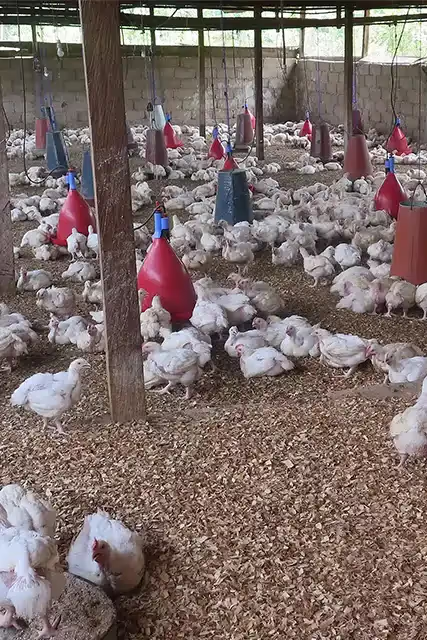Avian flu symptoms in humans can resemble those of regular flu, making it difficult to diagnose without testing






The terms “bird flu,” “HPAI,” or “H5N1” have been reappearing in the headlines. These words are often used interchangeably to refer to the viral disease known as avian flu, that primarily affects birds. H5N1 is a specific strain of this virus that has been linked to recent outbreaks. Meanwhile, HPAI, or “highly pathogenic avian influenza,” refers to a classification of deadly strains–this group indicates the virus’ potential to spread rapidly and cause significant illness or death in birds. In fact, birds affected by this strain are left with a mortality rate of 90-100%.
How does the flu spread?
Infected birds shed the avian virus through their saliva, mucus, and fecal matter. Other animals can carry the virus in their respiratory secretions, blood, organs, or even milk. Birds may contract the flu if they come into direct contact with infected birds, their fecal matter or even virus-contaminated water or soil. But it’s not just birds–this virus can occasionally also spread to other species, including mammals like cats, cattle and, in rare cases, humans. Though this transmission is rare, close contact to the HPAI strains has caused the virus to jump to cats, for instance. Mammals like cats and even humans can contract bird flu by either being in direct contact with infected birds, or consuming them.
Recent developments in India
As of early 2025, H5N1 cases have been reported in nine states across India, prompting the central government to take measures to improve the current surveillance and biosecurity measures at poultry farms.
Key incidents:
- In February of this year, the foremost case of chickens being found dead were noticed in Bihar at the Indian Council of Agricultural Research (ICAR) – Research Complex for Eastern Region in Patna. Following that, cases were confirmed in Bhagalpur and Nawada districts. Due to a lack of testing facilities in Bihar, samples were sent to Bhopal and Kolkata. In response, poultry sales in affected areas have been banned, and eggs have been removed from the mid-day meal menu in government schools. According to the revised regulations issued in 2021, the sale and purchase of poultry and its products are banned in regions classified as infected or under surveillance, i.e., within 1 km to 10 km of the site of incidence.
- In an unusual instance in Madhya Pradesh’s Chhindwara, three cats and a bird were detected with the virus. Authorities culled over 700 chickens and shut down a local market for 21 days as a precautionary measure to prevent further spread of the virus. Around 65 samples from individuals in contact including pet owners and veterinarians with the infected animals tested negative. The State has also been requested to initiate control operations as per the Action Plan for Prevention, Control & Containment of Avian Influenza.
- Cases in poultry have been detected in certain regions of Jharkhand and Punjab as well.
Also read: How our meat industry is feeding antibiotic resistance
Precautionary measures
Given the potential risks associated with bird flu, precautionary measures are necessary to limit the potential spread of the disease. Here’s what you can do:
- Properly handle and cook poultry products
- Refrigerate eggs, meat, and poultry.
- Cook eggs and meat at a temperature above 70°C for at least 30 minutes.
- Wash hands thoroughly after handling raw poultry products.
- Get vaccinated against human influenza
While the human influenza vaccine does not protect against bird flu, it can help healthcare workers focus on cases that need immediate attention. Because both types of flu present similar symptoms, being vaccinated against the human influenza helps your healthcare provider eliminate it, and avoid diagnostic confusion.
- Protect your pets
Dogs and cats are not common carriers, but they can contract bird flu in rare cases. Keep them away from sick or dead birds.
- Avoid contact with sick or dead birds
Animals with the flu may show signs of heavy breathing, rapid respiration, or redness in their eyes. In more severe cases, they might exhibit lethargy, loss of appetite, difficulty maintaining balance, or swelling around their faces. Other symptoms can include nasal discharge and diarrhea.
Treatment approaches differ depending on the species, and while some animals can recover with appropriate care, the infection can be fatal. Prevention is the effective way to reduce the risk involved.
- If you come across an infected bird or animal, report it to local health officials.
- Avoid direct contact with infected animals or their secretions.
- Practice good hygiene
An oldie but a very effective goodie: wash hands frequently, especially after handling birds or visiting farms.
Symptoms in humans
Bird flu symptoms in humans can resemble those of regular flu, making it difficult to diagnose without testing. Common symptoms include:
- Cough
- Fever
- Sore throat
- Muscle aches
- Pneumonia (in severe cases)
It is important to note that infection in people cannot be diagnosed by clinical signs and symptoms alone; laboratory testing is needed. Diagnosis requires a lab test using nasal or throat swabs. It should be noted that testing is more accurate when the swab is collected during the first few days of illness. Currently, facilities to test humans are available at the All India Institute of Medical Sciences (AIIMS) in New Delhi and the National Institute of Virology in Pune.
As of publishing, there is no evidence of human-to-human transmission of H5N1. Most cases in humans have resulted from direct contact with infected poultry or contaminated surfaces.
Explore other topics
References






.avif)




